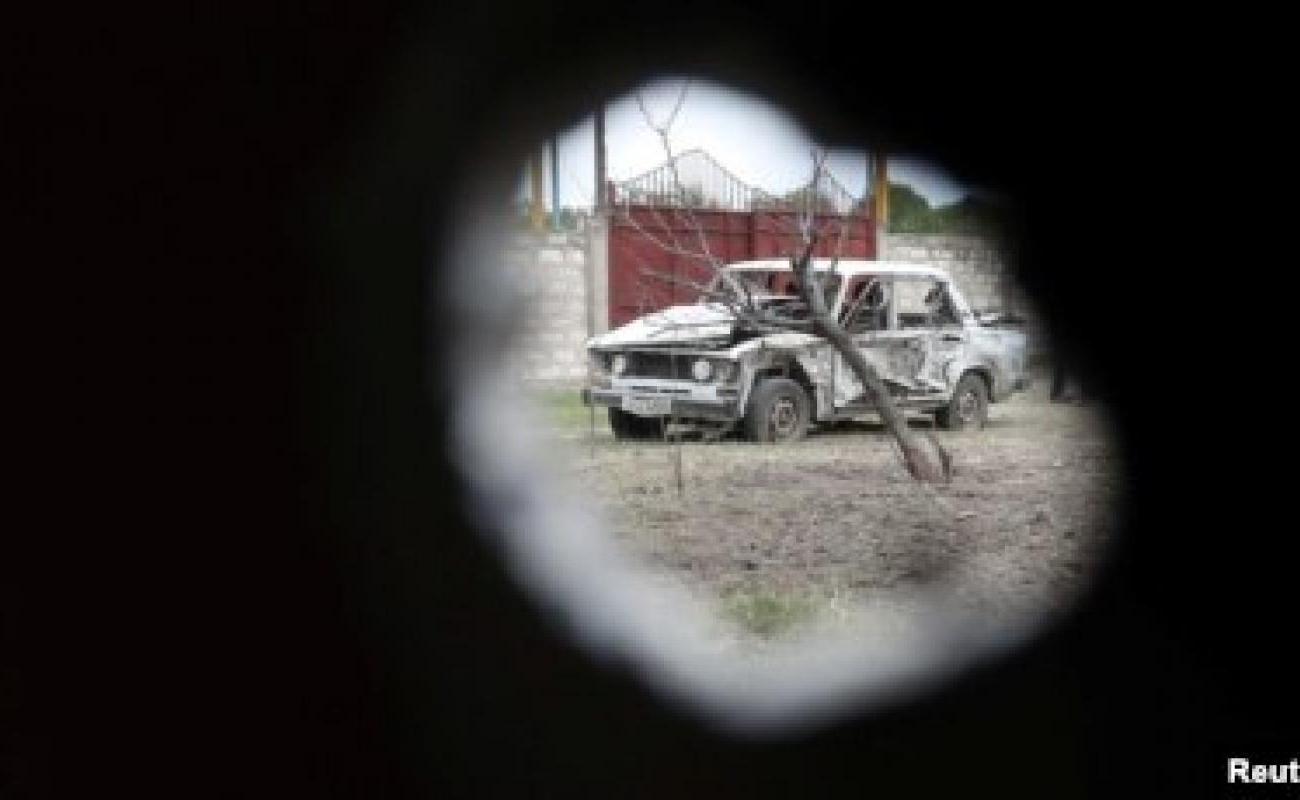Is there any resemblance between the South Ossetia, Abkhazia and Nagorno-Karabakh conflicts?

After the collapse of the Soviet Union, South Caucasus inherited three armed conflicts, all with a separatist background, and these have yet to be resolved and remain frozen. These conflicts are Georgia’s Abkhaz region, South Ossetia, and the Nagorno-Karabakh conflict between Armenia and Azerbaijan. Indeed, since they challenge the territorial integrity of Azerbaijan and Georgia, these conflicts also are accepted as the main factors threatening the security of the region. Their frozen nature makes them very fragile, since the armed conflicts between the parties could easily flare up again. In particular, the Russo-Georgian war that broke out in 2008 was clear evidence of the fragility of the disputes.
All three conflicts broke out on the eve of the collapse of the Soviet Union, due to the separatist demands of the Nagorno-Karabakh Armenians in Azerbaijan and Ossetians and Abkhaz in Georgia. In all three cases, the conflicts transformed into an armed phase, which in turn led to the beginning of the wars between the disputants, followed by the involvement of external factors. In comparison to the Abkhaz and Ossetians, Armenians had already been granted a sovereign state – the Republic of Armenia. However, their demand focused on the separation of territory in the neighboring state, Azerbaijan, and integrating those territories using its compact ethnic group settled in those territories. The direct involvement of Armenia as a primary party in the dispute, particularly in the armed and peace-building stages, made the conflict a territorial and interstate conflict. However, the conflicts in Abkhazia and South Ossetia should be defined as ethnic and intrastate, because, they broke out as a result of disagreement between the central government and an ethnic autonomous region.
In all three cases the war ended with a conditional victory by the separatists, who were supported by external groups such as Russia and Armenia, and with the signing not of a peace treaty but rather of a ceasefire agreement. After the ceasefire agreements, the role played by third parties as mediators in the conflicts increased. Indeed, in the case of Nagorno-Karabakh and South Ossetia, the OSCE, and in Abkhazia the UN, became the main mediators in the peace talks. In Abkhazia and South Ossetia, in accordance with the requirements of the ceasefire agreements, peacekeeping forces were involved in the regulation process, but in the Nagorno-Karabakh conflict, this was ruled out due to the parties disagreeing on the origin of the peacekeepers.
Another very important resemblance between the conflicts is the role that Russia played in all of them, since it was involved officially as a third party but unofficially was an external factor with its own interest in how the conflicts would be resolved. In fact, during the wars in all three cases Russia participated directly and actively and played a crucial role in the conditional victory of the separatists. After the wars, Russia was one of the initiators of the peace talks between the parties, but all its attempts failed. It might be assumed that Russia failed to make a sufficient effort to settle the conflicts, since it had its own interest in maintaining the status quo that prevailed after the wars and aimed to preserve ‘no peace no war’ conditions in the disputed regions. In fact, the Russo-Georgian war in 2008 proved this perception. When Georgia marched into South Ossetia in order to restore its territorial integrity, Russia reacted by sending its army to prevent Georgia doing this, and not only was it able to stop Georgia, it also temporarily occupied its territories. In the aftermath of the war, Russia recognized the independence of South Ossetia and Abkhazia.
After the recognition by Russia, some other countries, such as Nicaragua, Venezuela, Nauru, Vanuatu and Tuvalu, reacted similarly and recognized the independence of these “states”. This is a differentiating factor between Nagorno-Karabakh and the conflicts in Abkhazia and Ossetia. While the separatist republics of Georgia have been recognized by a few countries, the so-called Nagorno-Karabakh Republic has not been recognized even by Armenia.
